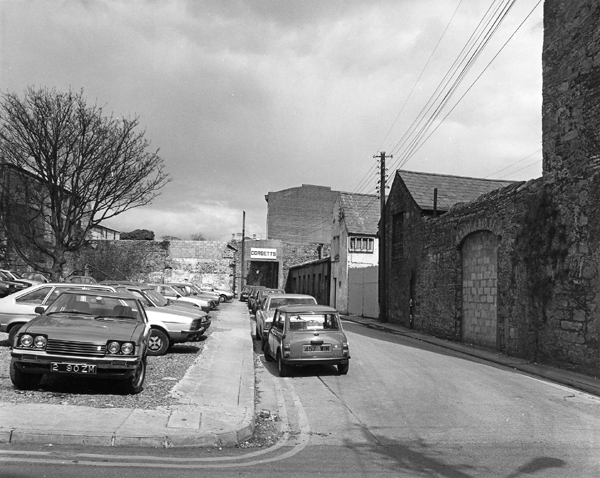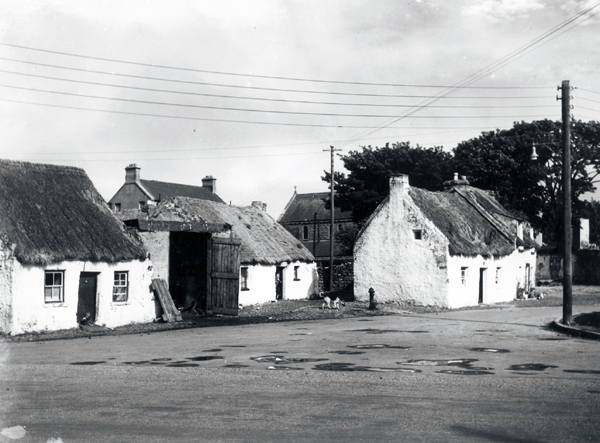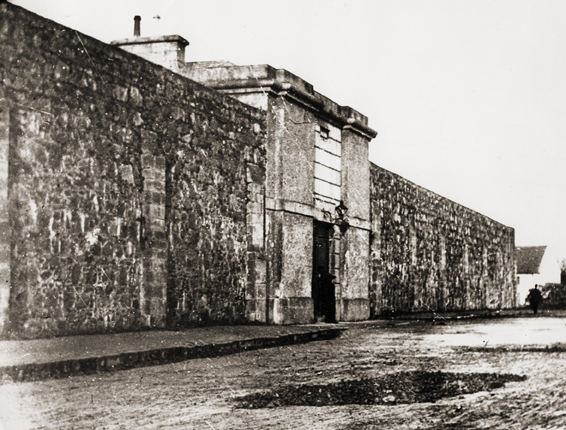Old Galway
A Relic of Old Decency

Our image today is of an original drawing done in 1958 by Belfast artist, Raymond Piper (now deceased) of the beautiful staircase in the Great Southern Hotel. When one entered the hotel, the reception desk was to the left, there was a small corridor leading to the dining room on the left, and another leading to the bar on the right. Just past these was a comfortable lounge area, and at the end of this was this magnificent staircase leading to reception rooms upstairs, and directly to the station platform.Construction began on the hotel one hundred and sixty years ago. The site was previously occupied by a block of tenements which was
Dredging the River

Alexander Nimmo made a survey of Lough Corrib almost two hundred years ago in which he wrote the following ; “The lake has 50 miles of shore, occupies 30,000 Irish acres and contains 1,000 acres of arable land in its isles, and contracts into a very spacious river about two and a half miles above Galway, which, flowing by the town, communicated with the Atlantic.
Nun’s Island About 100 Years Ago

In the nineteenth century, Nun’s Island was part of the industrial heartland of Galway. The 1911 census tells us that the street comprised of 2 lodging houses, Grace’s Asylum, the Presbyterian Church, a Ladies School, a Fever Hospital, Her Majesty’s Prison, a Brewery and Malt House, St. Joseph’s Seminary, 2 Flour Mills, a Granite Works and the Poor Clares Convent as well as the various residences.Our somewhat hazy photograph was taken about 100 years ago, and shows, on the left, the gates into the Bishops School. The tall building next to it was a bonded warehouse belonging to J.T. Miller and Sons.
Lydons of Whitehall

This photograph of Whitehall was taken about 1984, after a row of small houses that were on the left were demolished. The space was used as a temporary car park before the development that is there today was constructed.At the top of the lane we can see a stretch of medieval city wall, on which there is a sign for Corbett’s Yard. This was the back entrance into the old Castle Barracks which had another entrance on Castle Street.The barracks was described as “A large early eighteenth-century house. The main facade, facing east, was of five bays and three storeys, with rendered walls and a high-pitched roof.
The Garra Glas in the Claddagh

The Garra Glas (The green field or green garden) was an area of the Claddagh which corresponds to where the Fire Station is today. Our photograph was taken in the 1930’s when things were changing in the area …. the old Claddagh houses were being gradually knocked down to make way for those that are there today. Kerbstones were being laid down to frame the newly laid road surface.The house we see on the left belonged to the Flaherty family. The building next to it was obviously converted from a cottage into a workshop of some kind with the large beam supporting
Executions in Galway Gaol

This photograph of the main entrance to Galway Gaol (facing the Salmon Weir Bridge) was taken in 1903. It was an imposing and intimidating building. The execution chamber was just over the main gate, and many prisoners perished there.Among those were three men, Thomas Higgins (Long), Patrick Higgins and Michael Flynn who were found guilty of killing bailiff John Huddy and his grandson at Cloughbrack on Lord Ardilaun’s estate. They dumped the bodies into Lough Mask, and as a result were tried and convicted and finally hanged in January 1883 by executioner William Marwood.
Memories of the Hangar

What we know as Salthill Park was originally a large field with a small lake. It was landscaped in 1907. In 1925, the Salthill Development Organisation (SDO) asked the Corporation to clean up a cesspool there, but that took some years. In 1924, three councillors, Mr. Bailey, Eyre Square, Martin Cooke and John Coogan bought an aeroplane hangar for the Urban Council for £400. It had been used by the RAF in Oranmore, and was re-erected it in the park. It was called the Pavilion Ballroom, but everyone knew it as 'the Hangar'.
Woolies in Galway

In the early 1950’s the chain of shops owned by Woolworths was expanding, but they did experience some difficulty establishing a branch in Galway. It appears some councillors and retailers resisted the move, but after several failed attempts, ‘Woolies’ (as they became known), acquired the former site of the old Royal Hotel on the Square. They knocked the hotel and put up a purpose built retail store. As the day of the opening approached, local interest became intense.
.png)